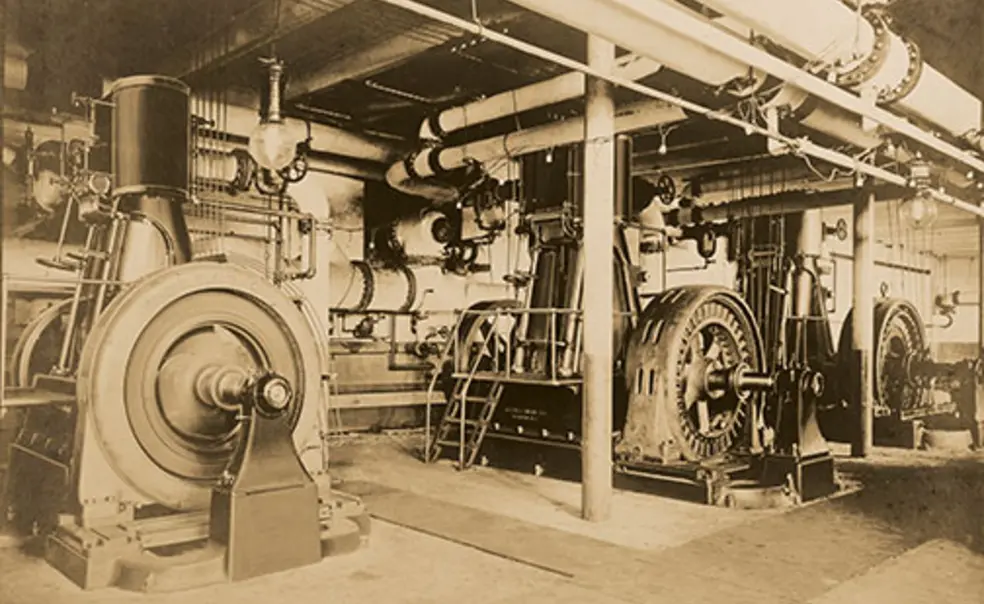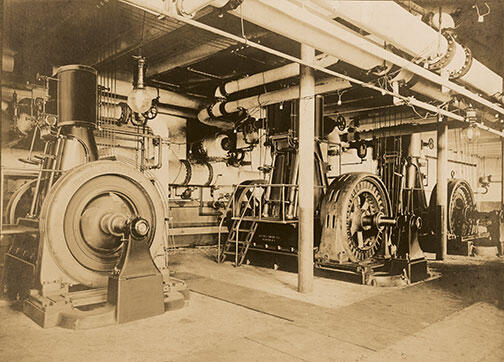Every July brings a flurry of campus improvements, but the summer of 1903 surely stands pre-eminent. Lawns were dug up for underground tunnels, eventually including a metal-and-concrete one snaking up to Nassau Hall, carrying steam mains and wires in vitrified conduits.
The tunnels started at the Power House, its smokestack disguised as a tower at one corner of the new gym. State-of-the-art engines would provide steam heat and electric light to the entire campus. From the standpoint of comfort, modern Princeton may be said to date from this campaign.
Thomas Edison perfected the light bulb just 20 miles from here at his Menlo Park laboratories in 1879, but the University was slow to catch on. Alexander Hall and the library were electrified in the 1890s, but not dormitories: The college treasurer rejected the architect’s idea of electrifying Brown Hall, saying that any students who needed that newfangled luxury could run the wires themselves.
But all that was about to change. By fall 1903, the Power House was lighting Brown and Dod halls, and the rest of campus soon followed.
There were other big changes. In 1895, four tubs and three showers in the gym were virtually the only bathing facilities for 1,000 students. The construction of baths and toilets in four dormitories in summer 1902 marked a hygienic revolution. A year later, 1879 Hall dormitory was rising: fully electrified, warmed by steam heat, with bathrooms and showers in the basement and even one toilet upstairs — in the tower office used by new University president Woodrow Wilson 1879.
Wilson’s own house, Prospect, also glowed with electricity. When he took visiting dignitaries around campus, he made sure to show them the Power House, which made all this modernity possible.













No responses yet